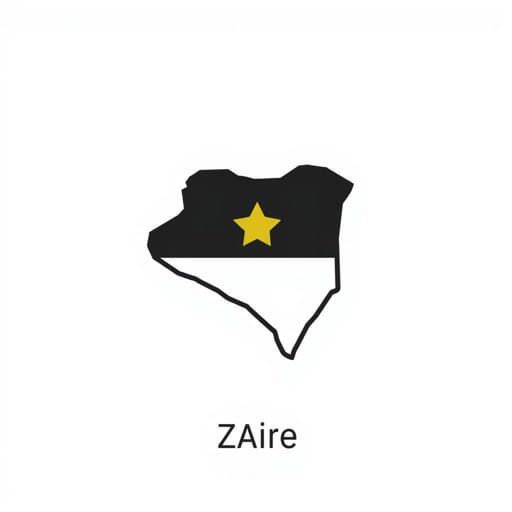The country once known as Zaire has undergone a remarkable transformation, both in name and identity. Situated in Central Africa, this nation is rich in history, natural resources, and cultural diversity. Its modern name, the Democratic Republic of the Congo, carries significant political and historical weight, reflecting a shift away from decades of dictatorship and colonization. Understanding why the name was changed and what it symbolizes provides insight into the broader history of African independence, post-colonial struggles, and national identity.
Background of Zaire
The Rise of Mobutu and the Birth of Zaire
After gaining independence from Belgium in 1960, the country initially adopted the name Republic of the Congo. However, this caused confusion with its neighbor, the Republic of the Congo (Brazzaville). When Colonel Joseph-Désiré Mobutu seized power in a 1965 coup, he implemented an ambitious cultural campaign known as ‘Authenticité.’ As part of this movement, Mobutu changed the country’s name to Zaire in 1971. The word ‘Zaire’ was derived from a Portuguese misinterpretation of a local Kikongo word ‘nzere’ or ‘nzadi,’ meaning the river that swallows all rivers, referring to the Congo River.
Authenticité and National Identity
Mobutu’s cultural campaign aimed to rid the country of colonial influence. Western names, clothing, and symbols were banned. Cities were renamed, and citizens were encouraged to adopt African names. While this seemed like an effort to promote African pride, it also helped Mobutu solidify power and construct a centralized national identity. The name Zaire became a symbol of Mobutu’s authoritarian rule, aligning closely with his personal political ideology.
The Fall of Zaire
Decline of Mobutu’s Regime
Throughout the 1980s and 1990s, Mobutu’s regime became increasingly corrupt and repressive. Despite the country’s wealth in resources like copper, cobalt, and diamonds, the economy deteriorated and infrastructure crumbled. Political dissent was crushed, and Mobutu’s government was accused of widespread human rights abuses.
With the end of the Cold War, Mobutu lost much of his support from Western countries, particularly the United States, which had backed him as a bulwark against communism. Internal dissent grew, and regional conflicts began to spill into Zaire’s borders, particularly following the Rwandan genocide in 1994, which brought an influx of refugees and armed militias.
The First Congo War and the End of Zaire
In 1996, a rebel coalition led by Laurent-Désiré Kabila launched a military campaign against Mobutu’s forces. Backed by neighboring Rwanda and Uganda, the rebels quickly advanced. In May 1997, Mobutu fled into exile, and Kabila declared himself president. One of his first acts as head of state was to rename the country the Democratic Republic of the Congo (DRC), effectively erasing Mobutu’s legacy and restoring a name that was historically associated with the post-independence government before Mobutu’s dictatorship.
The Democratic Republic of the Congo Today
Political Significance of the New Name
The new name, Democratic Republic of the Congo, is a symbolic return to the aspirations of national unity and democratic governance. However, the name change alone did not bring immediate stability. The DRC has faced ongoing conflict, including the Second Congo War (19982003), often described as the deadliest conflict since World War II.
Despite the challenges, the name emphasizes the country’s desire to move away from autocratic rule and toward a more inclusive and representative political system. The term ‘Democratic Republic’ suggests a nation governed by its people, though critics argue that democratic processes are still far from being fully realized.
Restoration of Historical and Cultural Identity
The re-adoption of the name Democratic Republic of the Congo also aimed to reconnect the country with its pre-Mobutu heritage. For many citizens and observers, it was not only a rejection of Mobutu’s oppressive rule but also a reclamation of a broader Congolese identity that existed before Zaire. It reasserted the Congo River as a central symbol of unity and continuity for the people of the region.
Legacy and Memory of Zaire
Historical Debate and Nostalgia
While Mobutu’s Zaire is remembered by many for repression and mismanagement, some older citizens recall periods of relative stability and national pride during the early years of his rule. The Zaire name still evokes mixed emotions seen by some as a period of identity assertion and by others as a dark era of dictatorship and decay.
International Recognition and Misconceptions
For years, the international community often confused Zaire with other African nations or retained outdated terminology. The change to the Democratic Republic of the Congo was also an effort to assert the country’s presence on the global stage with a name that reflected both its historical roots and future ambitions. Even today, some people refer to the country as Zaire out of habit or lack of awareness, but the official name has firmly taken hold in diplomatic, academic, and popular usage.
The transformation from Zaire to the Democratic Republic of the Congo represents more than a name change it symbolizes a national effort to rebuild identity, assert independence, and move away from the legacy of authoritarian rule. The journey has been complex and fraught with conflict, but the new name offers a vision of unity, resilience, and hope. Understanding the context and consequences of this change provides deeper insight into the country’s history, its struggles, and its continued quest for stability and progress. As the DRC continues to evolve, its name remains a powerful reminder of the past and a statement of intent for the future.
